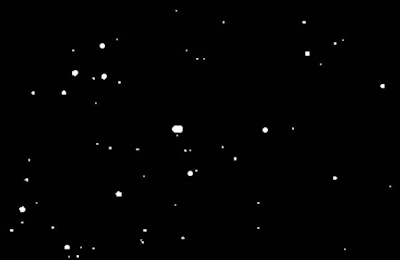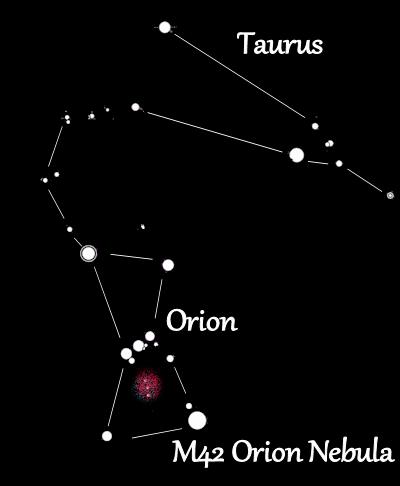
If you don't have a telescope that is ok. There are still lots of wonderful things you can see in the night sky without one. And this observing the night sky without a telescope is called "star gazing". And in this article I give you some solid tips and advice on a successful star gazing session.
Some rules of thumb and suggestions for star gazing

Introductory advice for successful star gazing
First think about getting a very dark sky. The darker the sky the better the viewing. More stars will show in a dark sky. And more celestial objects like galaxies and planets will show. And when it comes to dark skies there are three things you should consider.
The first consideration is to go out late! The later the better. The further the sun goes down under the horizon the darker the sky.
The second consideration is light pollution. If you live in a big city there will be a lot of light pollution and this has a big affect on viewing. So, if possible plan your star gazing away from city lights. Or at least as far as is reasonable for you.
And finally you should consider the moon.
This is something we don't think about when it comes to star gazing but if the moon is full it gives off a lot of light! So, ideal times of the month would be when there is no moon or only a sliver of moon.
If you are disappointed because you go out and the moon is lighting up the sky too much that is ok. It changes every night and even over the course of the night the moon might set. So, you can always check back in a few hours.
Ok, so we have found some dark skies, what is next?
This part is important! It means you need to have a little bit of patience -about ten minutes worth. And it's all about your pupils.
You know how your pupils get larger and smaller depending on how much light there is available?
Well it takes a little bit of time for your eyes to fully adjust. So, go outside, out of the lights and relax for a good ten minutes. If the sky doesn't look good and dark at first it will get darker as your pupils adjust to the darkness. You will notice the difference and see much more.
Let me finish the introduction to star gazing by talking a little bit about clothing and comfort.
We are predominantly indoor creatures. We spend a whole lot of our time inside the house. And that makes it easy to forget that spending an hour or more outside at night can get chilly! So, plan for this. Based on where you live you should plan on some extra clothing. You will be standing still, or sitting in a chair for a long period of time too. And this means you will get even chillier. So, depending on where you live bring some extra clothes, an extra sweater, hat, even gloves if you might need them. It is much easier to simply not wear extra clothing than it is to be cold because you didn't bring anything extra.
Bring a Star Chart or star wheel.
You can just enjoy the beauty of the night sky and make a wonderful evening of it. But there is a bit more excitement and satisfaction when you can recognize various objects like the constellations. There is a bit of fun in the hunting and recognizing of them. And to do this you will need a star chart or better yet a star wheel.

This is a star wheel. You can see that the outer ring has the months written on it. You rotate that to the current date then the stars show up as they would in the night sky in the oval area.
This is really helpful and very easy to make and use. You print it up and cut it out. It is a free download pdf available from the Amateur Observers society of New York right here:
Free star wheel you can Print up and assemble
Print it on card stock if you have it. If not I recommend you glue stick the sheets to manila file folder or cereal box cardboard to make it durable.
What Kind of Things Should You Look For?

The first thing you can look for is the Milky Way galaxy. It is a very light band that spreads across the sky. The picture here at left shows it . It is very dim and you need a nice dark sky to see it. You also need your eyes to be nicely adjusted.
It should be spread across most of the sky. It is visible year round although during some months it is higher or lower in the sky and less obvious.
Photo Credit:
Steve Jurvetson, Milky Way Night Sky Black Rock Desert Nevada, The brightness of the image was modified by Will, CC BY 2.0
Now let's have a little fun and find some more things!
Next up is to try and recognize some constellations. There are officially 88 constellations but you can't see them all. Some are only visible from either the northern or the southern hemisphere. And all constellations are only visible during certain seasons of the year. But that's ok. It is fun to see how many you can actually identify.
And identifying the constellations will also help you to find other things like planets, galaxies, star clusters and nebulae. (Nebulae are objects that look like tiny fluffy cotton balls. They are collections of stars or gas).
Let's take a look at how identifying the constellations can help.
Here is an actual portion of the night sky. This is pretty accurate to the constellations of Casseopeia, Andromeda and Pegasus.
And there is a wonderful little secret hidden in this portion of the night sky. The Andromeda Galaxy is here somewhere. And you can see it with the naked eye as an elongated little cotton ball. But you would never find it admidst the 5,999 other stars in the sky.

A Star Chart helps us understand and identify these various stars. This is the exact same star pattern. But now we have broken it down into understandable groups of stars. And with this we can now figure out what is where. So, in no time at all you can identify these patterns and know right where you are in the night sky.

And the star chart tells you that the Andromeda Galaxy is right here. And now that you know exactly what little dot of light that it is you can start really looking at it. And it will reveal itself. You will be able to see that it isn't a dot of light but a little elongated cotton ball! Yup! You have found the Andromeda Galaxy with just your eyes.

So, this is one of the wonderful things about star charts. Not only do they help you identify and learn the constellalations but they also show you other things.
Ok! Give that a try! The Andromeda constellation is a summer constellation. But if you are going to try this in the Winter that is alright. I have another one for you. It is in the constellation Orion. And that is a winter constellation.
Find Orion and Taurus on your star wheel and from there you can easily see, hanging from Orion's belt the fuzzy spot that is the Orion Nebula. Also known as M42.

Let me finish off this article by talking about the planets.
For most of the year there are at least one or two planets available for viewing with the naked eye. And they are easy to spot once you know what to look for. People often think that they are visibly moving across the sky but this isn't true. The planets, in the night sky appear to be stationary although from night to night they will have moved to a slightly new spot in comparison to the background stars.
So, how do you identify a planet?
Often times a planet like Jupiter, Saturn, or Venus will be very bright. It is conspicuous. And a telling identifier of planets is that they do not twinkle. This is because they are more than just a point of light and atmospheric disturbance doesn't cause them to have a "twinkling" appearance. So, if the stars are twinkling and one, unusually bright star isn't twinkling chances are good that it is a planet.
But, you can get more specific with this and positively identify a planet by using a star chart. Typical star charts will show you the locations of various planets throughout the month. This website has some nice planetary star charts and some nice views of how the planets look on the horizon: The Planet location charts and illustrations
Star Gazing and Camping
One final thing I want to discuss is how much of an opportunity it is to do some star gazing while on a camping trip. When camping we are often filled with all the natural wonder during the day. And at night we are often in our tents or huddled around a campfire (which ruins our night vision. But don't forget about the night sky. If you are camping in a remote location with very little city light pollution you might be shocked by how amazingly rich and brilliant the night sky is. So, bring along your star wheel or maybe a book or atlas. It will add a whole new dimension to your camping.
For more fun about the night sky and star gazing continue on to Part 2

Would you consider a donation of $1 to support my work? Paypal makes it very easy and safe. Click here to donate $1 - Every little bit helps Will to keep making great tutorials and projects. Thanks!
Will's New Book:

See It with a Small Telescope: 101 Cosmic Wonders Including Planets, Moons, Comets, Galaxies, Nebulae, Star Clusters and More - Available in paperback and kindle on Amazon right here

Want More Star Gazing Stuff? I have a whole section of it right here

The National Geographic Backyard Guide to the Night Sky
Stargazing's too much fun to leave to astronomers, but often we're blinded by science—dry facts can easily turn enchantment into a chore. We just want to lie down, look up, and understand the heavens above. The National Geographic Backyard Guide to the Night Sky shows us how.
Authors Howard Schneider and Patricia Daniels take an expert but easygoing approach that doesn't overwhelm—it invites. Ten chapters cover everything a beginning stargazer will need to know, from understanding the phases of the moon to picking Mars out of a planetary lineup to identifying the kinds of stars twinkling in the constellations.
Throughout the book, star charts and tables present key facts in an easy-to-understand format, sidebars and fact boxes present illuminating anecdotes and fun facts to sweep us swiftly into the stardust, and by the time we realize we've been schooled in solid science we're too engrossed to object.
Along with practical advice and hands-on tips to improve observation techniques, the guide includes an appendix full of resources—from books and web sites to lists of astronomy clubs and associations to local planetariums and museums. This indispensable book guides us on a new path into the night sky, truly one of the greatest shows on Earth.

The Night Sky: A Glow-in-the-Dark Guide to Prominent Stars & Constellations North of the Equator (Pocket Naturalist Guide Series)
This innovative - Glow-in-the-Dark - pocket reference highlights prominent constellations and stars that are visible with the naked eye north of the equator. Simply shine a light on the guide to illuminate the constellations and their names on the summer or winter star charts. Also includes descriptions of the meaning of each constellation and instructions on how to use your fingers to 'walk' between constellations to find prominent stars. Laminated for durability, this clever guide is an excellent source of portable information and ideal for field use by novices and experts alike. Over 250,000 sold. Made in the USA.
|
![]()

















